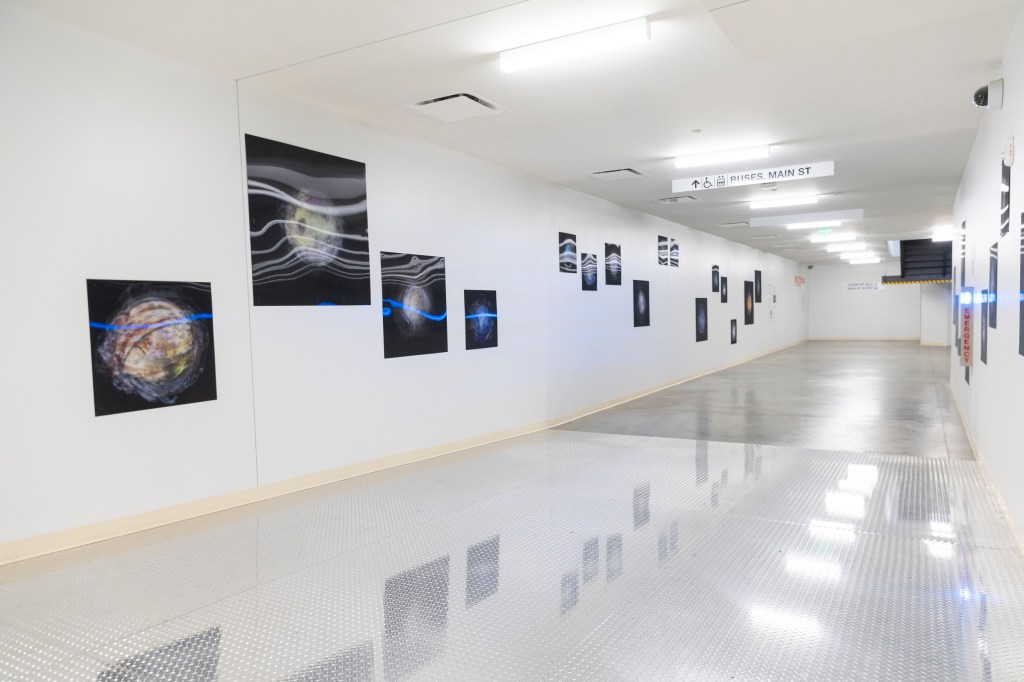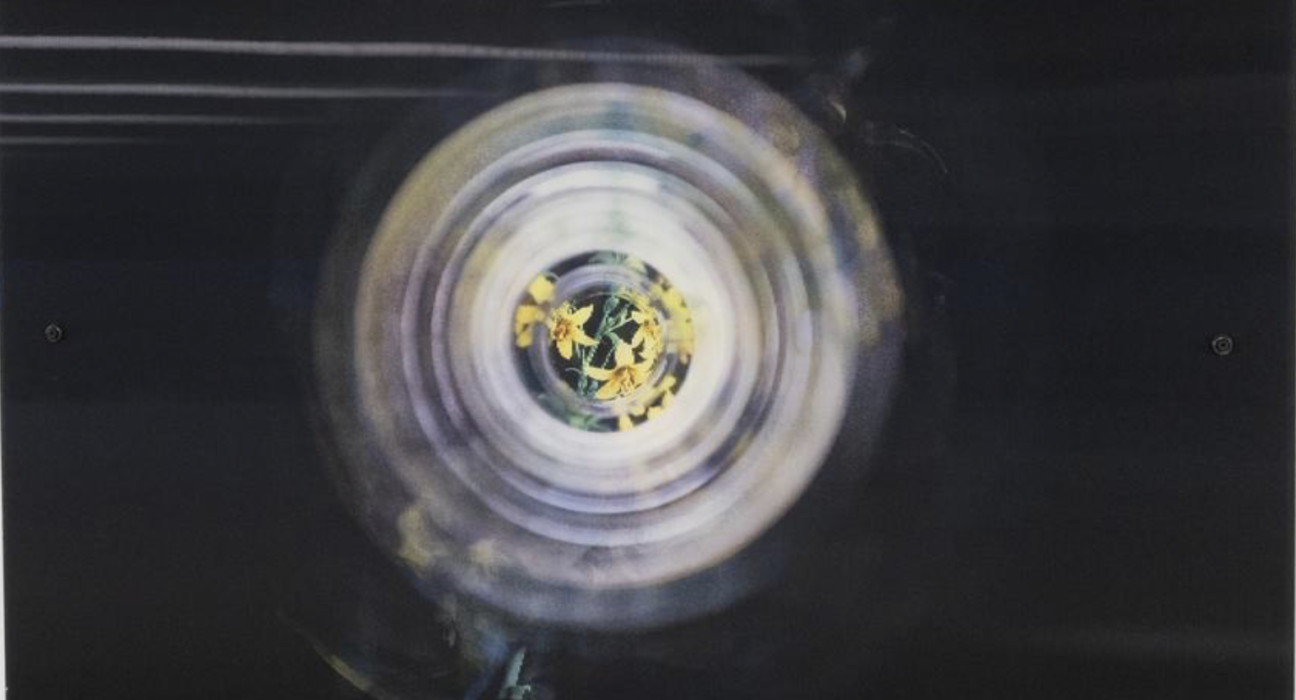Artist Ligia Bouton first learned about astronomer Henrietta Swan Leavitt during a 2019 tour of the University’s famed Plate Stacks, which house more than half a million historical glass-plate negatives and spectral images of the night sky.
Leavitt was among the nearly 150 female scientists who catalogued the images during the late 19th and early 20th centuries, working as “astronomical computers” at the Harvard College Observatory. She became the first to devise a way to effectively measure distances to remote galaxies after noting specific star luminosity patterns. Leavitt’s contributions, which paved a path to modern astrophysics, went largely unsung during her lifetime, due to her gender as well as her untimely death from cancer at 53.
Leavitt’s story stirred Bouton, who seeks to infuse appropriated historical narratives, particularly forgotten histories of women, into her sculpture and photography. And it resulted in a new exhibition that pays homage to the researcher whose work has proved crucial to scientists seeking to determine the size and scope of our universe.
“I think about how different time periods affected women’s ability to do their work, and what kinds of obstacles they faced.”
Ligia Bouton
“I think about how different time periods affected women’s ability to do their work, and what kinds of obstacles they faced,” said the Mount Holyoke College professor.
“25 Variable Stars: A Temporary Monument for Henrietta Swan Leavitt,” opened this summer at the temporary entrance to the northbound Red Line MBTA station at Kendall/MIT in Cambridge. The dynamic, lenticular photographs depict the periodic luminosity of 25 Cepheid variable stars that Leavitt first used to ascertain galactic distances.

Writing in a 1912 publication, Leavitt detailed her discovery that Cepheid stars — captured on glass plate photographs still housed at the Harvard College Observatory — pulsed in a predictable way. She documented a relationship between the size of each star and how quickly it pulsed, leading to the first system for measuring far distances in the universe.
The legacy of Leavitt’s discovery is immense, according to the Center for Astrophysics | Harvard & Smithsonian. “Leavitt’s Law,” as her findings became known, were ultimately used by Edwin Hubble to prove that the universe is made of multiple galaxies. It is still used today to track the expansion of the universe and to establish relative distances to new galaxies, black holes, and supernovae.
Thom Burns, curator of astronomical photographs at the Plate Stacks, worked with Bouton and colleagues at the Center for Astrophysics on supporting materials and is organizing a free artist’s talk with Bouton on July 24. Center for Astrophysics Director Lisa Kewley wrote accompanying text that now hangs alongside the pieces.
“This installation has not only given an opportunity to share the amazing story of Leavitt, but also showcases the wonderful artistic skill and vision that Ligia Bouton has,” Burns said in an email. “She has created a series of these changing stars that captivate the public, create wonder, and even gets the busy commuter to take a moment to appreciate a pioneering woman of the past and to imagine what other secrets the universe holds.”
The “25 Stars” exhibition made its debut in Copenhagen in 2023. Bouton later proposed it to the MBTA, she said, because she wanted it shown in the city where Leavitt had lived and worked. The sense of motion in the portraits also felt in line with the bustle of commuter traffic, Bouton said.
Each piece now hanging at the busy T stop was created by layering multiple photographs of hand-blown glass objects. In lenticular printing, a lens is applied to the surface of a digitally manipulated photograph to produce the illusion of movement when it is viewed from different angles.
The star “portraits” contain images ranging from body parts to insects to plants, representing aspects of Earthly life. Bouton honored Leavitt’s research in each individual work by incorporating the number of photographs corresponding to the number of days it takes a particular Cepheid variable star to dim from brightest to smallest. The largest pieces contain 30 photographs, for 30 days.
Bouton hopes her art will bring exposure to the extraordinary legacy of scientific discovery Leavitt left behind.
“I hope it’s just sort of weird and wonderful enough that it either catches people in a different way, or maybe they will become a little bit interested and find out about her,” Bouton said.
The installation will be on display for about 18 months. Project sponsors included the Center for Astrophysics | Harvard & Smithsonian, BXP, the Massachusetts Bay Transportation Authority, Mount Holyoke College, Visual Studies Workshop, Cambridge Arts, Mass Cultural Council, and the Smithsonian Artist Research Fellowship.
Source link

